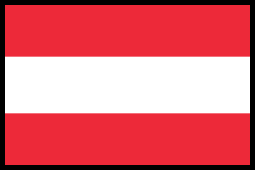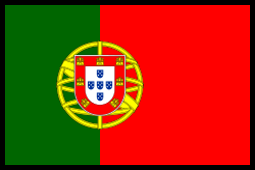Send Gifts In Europe / Germany / Gift Baskets to Chemnitz

Send Gift Baskets to Chemnitz, Germany
Are you looking for the best and perfect gift baskets to Chemnitz, Germany for your loved one? If yes, you reached the right place.
Chemnitz is a city in Saxony, eastern Germany.
Population of Chemnitz: 246,353
The standard delivery method to Chemnitz: 2 – 3 working days*
The express delivery method to Chemnitz: 1 – 2 working days*
*Saturday and Sunday are not included as working days
Use Our Advice
We are here always at your service.
No Minimum Order
Each customer is important to us.
Shipping Information
We deliver all over Europe.
Discover Our Gift Baskets For Every Occasion
Holiday Gifts
Chemnitz Overview
Chemnitz is a German town in the east of the country. It has one of the biggest monuments dedicated to Karl Marx, a pioneer of socialism. Nearby, you can also find remnants of its defensive walls. A collection of modern pieces in an industrial-style building, the Gunzenhauser Museum is an example of New Objectivity architecture. On display, there is a historic 1896 steam engine.
The name of the city as well as the names of the rivers originate from Slavic roots. Chemnitz is the third largest city in Thuringia-Upper Saxony after Leipzig and Dresden, with over 220,000 inhabitants. Chemically is largely based on the service and manufacturing industries. The city also has a 10,000-student university: Chemnitz University of Technology.
Etymology
Chemnitz is named after the river Chemnitz and translates to “stone”. The word is derived from the Slavic word Kamen meaning “stone” and was formed by combining the words with the suffixes.
Kamienica is the Polish word for this particular fairy-tale castle. Czech speakers refer to it as Saská Kamenice — not to be confused with the town of Lviv in Ukraine. There are other places called either Kamienica or Kamenice, usually towns in countries with Slavic populations.
History
Poland is full of history, with one settlement, in particular, dating back to the early days of Slavic tribes. It’s called Kamienica and was first documented in 1143 as a new home for Benedictine monks. Chemnitz was then converted to German as Kamienica. In 1307, the town became a part of the Margraviate of Meissen, which was later converted to the Saxon monarchy in medieval times. The city became an important trade and textile production center in medieval times. More than one-third of the population worked in textile production. In 1356 the Margraviate was succeeded by the Electorate of Saxony, an autonomous region of Germany.
Georgius Agricola (1494-1555), the author of several key works relating to mining and metallurgy, was also a city physician in Chemnitz and lived there until he died in 1555. In 1846 he became a citizen of Chemnitz and in the same year was appointed lord mayor, serving again in 1847, 1850, and 1855. Despite being a leading citizen of the city, when Agricola died in 1555, the Protestant Duke denied him burial in the city’s cathedral because of his allegiance to his Roman Catholic faith. After his friend’s aid arranged for more favorable burial conditions in Zeitz, it was difficult for Agricola to stay in Chemnitz anymore. He died and his tombstone is found in the older part of this town today.
After, 1806, the Electorate has renamed the Kingdom of Saxony at which time it continued to exist for nearly a century. However, by 1918, amid the revolutions that followed World War One, this entity was dissolved.
From the early 19th century onwards, Chemnitz had become a major industrial center. It has often been called “the Saxony Manchester” after one of the city’s older names and its textile industry. Industrial innovations were spearheaded by important companies created by Richard Hartmann, Louis Schönherr, and Johann von Zimmermann. These firms contributed greatly to the development of Chemnitz as a manufacturing center and later in Germany. Chemnitz peaked in 1913 with a population of 320,000 and was at that time larger than both Leipzig and Dresden. Chemnitz was booming before the First World War when it lost many of its inhabitants. But it bounced back again and reached its peak population in 1930. Sadly, the world economic crisis halted and reversed this progress.
Culture and sights
The city was awarded the title of European Capital of Culture in 2025 on 28 October 2020, beating Hanover and Magdeburg.
Theatre C does a range of things: opera (opera house from 1909), theatre, ballet, and Figuren (puppets), and concerts by the Robert-Schumann-Philharmonie Orchestra (founded 1832).
One of the highlights in this area is the Kassberg district, which includes 18th and 19th-century buildings. Another great sight is the Karl Marx Monument by Lev Kerbel, nicknamed Nischel by locals. The Old Town Hall with its Renaissance portal (15th century) and the Contemporary opera house provide a highlight of the old town’s unique architecture. The Red Tower is the most noteworthy landmark. It used to be part of the city wall and was built during the 12th or 13th century.
The petrified forest in Chemnitz can be admired in the courtyard of Tietz Kulturkaufhaus. It is one of the only ones, and it dates back hundreds of millions of years (details shown in the Museum of Natural Sciences “Museum für Naturkunde Chemnitz”, founded 1859). The city also has its natural science museum, which is among the smallest in Germany.
Located in the City of Berlin, Germany, most of the city’s industry has now dispersed. The center of Berlin has been rebuilt as well as several shopping centers. Many of these shops are international brands, including Zara, H&M, Esprit, Galeria Kaufhof and Peek & Cloppenburg. The large Galerie Roter Turm (Red Tower) shopping center is very popular with young people.
The Chemnitz Industrial Museum is an Anchor Point of ERIH, the European Route of Industrial Heritage. Other unique industrial landmarks are located at “Schauplatz Eisenbahn” (Saxon Railway Museum and Cable Running System). The State Museum of Archaeology Chemnitz opened in 2014 and is located within the iconic former Schocken Department Stores (architect: Erich Mendelsohn; opened in 1930).
The Gunzenhauser Museum, formerly a bank, was opened on December 1, 2007. Alfred Gunzenhauser who lived in Munich had a collection of 2500 artworks including many paintings and drawings by Otto Dix, Karl Schmidt-Rottluff, and others. Chemnitz’s other big art museum is located near the railway station, it’s called “Museum am Theaterplatz” (built-in 1909 as the “König-Albert-Museum”). The Botanischer Garten Chemnitz is a municipal botanical garden, and the Arktisch-Alpiner Garten der Walter-Meusel-Stiftung is a non-profit private garden specializing in arctic and alpine plants.” Near the city center, you’ll find the Esche Museum (designed by Henry-van-de-Velde himself) which was built in 1902. This national museum is an extravagant house in art nouveau style.
Administrative divisions
The city of Chemnitz includes a whopping 39 neighborhoods. The ones you should be most familiar with are Einsiedel, Euba, Grüna, Klaffenbach, Kleinolbersdorf-Altenhain and Mittelbach-Röhrsdorf-Wittgensdorf. These are the ones classified as “local. After 1990, these neighborhoods came into being as a result of incorporation and unlike the other parts of the city have this special designation. These areas typically have their councils, which are made up of members of the community with variable numbers. The councils hear important matters and make decisions based on those that are relevant to the particular locality. The final decision is, however, dependent on the city council of the city of Chemnitz. The official identification of districts by numbers follows this principle: Starting in the city center, each neighborhood is given a number corresponding to the sum of its digits. Columns (neighborhoods) are going clockwise, starting with 1 for the center of town.
Politics
The first mayor of unified Berlin was Dieter Noll from the Christian Democratic Union (CDU), who served from 1990 to 1991. The city council chose the mayor until 1993 when Joachim Pilz was chosen by popular vote. Peter Seifert was the mayor of Mannheim between 1993 and 2006. Between 2006 and 2020, Barbara Ludwig (member of the Social Democratic Party) served as mayor. The most recent mayoral election was held on 20 September 2020, with a runoff held on 11 October.
Economy
Chemnitz is the largest city in the Chemnitz-Zwickau metropolitan area, and it’s one of Germany’s most important economic areas. In 2016, its GDP was €8.456 billion, while GDP per capita was €34,166. Since 2000, Chemnitz has had a very high annual GDP growth rate and is among the top ten German cities in terms of economic growth. The regional economic structure is made up of medium-sized companies. Mechanical engineering, metal processing, and vehicle manufacturing are the most significant heavy industrial sectors.
100,000 people are employed in Chemnitz and 46,000 of those commute from other areas. 16.3% have a university degree which is twice the national average.
Demography
After the German reunification, Saxony faced a significant population decrease. In 1988, Chemnitz lost 20% of its inhabitants. They have a fertility rate of 1.64 in 2015.
Population
247,237 (2019)
Transport
Roads
– Chemnitz is connected to two major motorways, A4 Erfurt – Dresden and A72 Hof – Leipzig.Public transport
– Chemnitz has an extensive network of public transport that consists of trams, buses, and the Stadtbahn.Airports
– There are three airports near Chemnitz. These include the two international airports in Dresden and Leipzig.
What is Chemnitz known for?
Chemnitz has a long history as a textile producer and bastion of trading. In 1806, Saxony became a kingdom under the rule of Frederick Augustus III. The end of WWI saw Saxony reformed as part of the German Republic, but this was short-lived as these republics eventually collapsed in post-war chaos.
Is Chemnitz worth visiting?
It’s not as crowded as other touristic cities and provides a lot for not a lot of money compared to others.
The Best Attractions In Chemnitz
- Karl-Marx-Monument
- Wasserschloss Klaffenbach
- Burg Rabenstein
- Saechsisches Industriemuseum
- Villa Esche
- Kunstsammlungen Chemnitz
- Historischer Theaterplatz
- Jakobikirche
- Besucherbergwerk Felsendome Rabenstein
- Roter Turm
- Sachsisches Eisenbahnmuseum Chemnitz-Hilbersdorf
- Powerhall
- Botanischer Garten Chemnitz
- Clubkino Siegmar
- Metropol Chemnitz
Send Gift Baskets To Chemnitz
Sending gifts to Chemnitz is easy with Walwater Gifts in Chemnitz. Walwater Gifts offer a variety of gifts for delivery in Chemnitz. No matter who you are buying for or what the occasion – Christmas Gifts to Chemnitz, Birthday Gifts to Chemnitz, Wedding Gifts to Chemnitz, New Baby Gifts to Chemnitz, Anniversary Gifts to Chemnitz, or Sympathy Gifts to Chemnitz, we have the perfect gift.
Walwater Gifts Holiday Gifts in Chemnitz
As we know, People in Chemnitz celebrate many different holidays that Walwater have a gift solution for each of them. We can deliver Christmas Gifts to Chemnitz, Valentine’s Day Gifts to Chemnitz, Mother’s Day Gifts to Chemnitz, Father’s Day Gifts to Chemnitz, Birthday Gifts to Chemnitz, Easter Gifts to Chemnitz, Holidays in Chemnitz, Corporate Gifts to Chemnitz, Business Gifts to Chemnitz, Online store in Chemnitz, etc.
Walwater Gifts is offering Express gifts delivery Gifts to Berlin, Gifts to Bielefeld, Gifts to Bonn, Gifts to Bremen, Gifts to Chemnitz, Gifts to Cologne (Köln), Gifts to Darmstadt, Gifts to Dortmund, Gifts to Duisburg, Gifts to Düsseldorf, Gifts to Frankfurt or anywhere else in Germany.
Delivery information for Chemnitz
Standard duration (without weekends and public holidays):
*4-5 business days (Monday – Friday).
Express duration (without weekends and public holidays):
*1-2 business days (Monday – Friday).
Gift Orders received by 12 am (+1 GMT) Walwater Gifts utilize several different shipping methods, always trying to find the best solution for you. Ground shipping 4-5 business days.
Please note that parcels in Chemnitz will not be delivered on Saturdays, Sundays, or Holidays.
Walwater Gifts Shipping information
When you provide us with complete and accurate delivery information, your gifts will be delivered promptly and you will be spared re-delivery charges. Please check your delivery address carefully. Incorrect or incomplete addresses will result in a € 20,00 handling charge in addition to all charges accrued for re-shipping each item. We cannot ship to P.O. Boxes.
Gifts to Hospitals or Hotels
Please confirm the recipient is still in the hospital/hotel before scheduling the delivery. When placing a gift basket order for delivery to a patient/guest please make sure that you include as much information about the patient’s/guest’s location as possible. Such as patient/guest’s name, Hospital, Department (i.e., Maternity), and Room No. and the Hospital’s complete address.
Shipping restrictions:
Based on the reason that we are sending our gift baskets to Chemnitz from our European office, there are no Shipping Restrictions. Therefore this all includes Walwater Gifts which contain alcohol brands gifts to Chemnitz.
Cities we deliver to Germany
Walwater Gifts deliver all over Germany. At Walwater Gifts to Chemnitz, we have extensive experience in sending gift parcels all over the world. However, each country has unique Customs Regulations and delivery times. Please feel free to contact us if you have any questions or need assistance placing your order online.
Send Exquisite Gift Baskets to Chemnitz, Germany with Walwater Gifts
If you’re looking to surprise a loved one, friend, or business associate in Chemnitz, Germany, there’s no better way to show you care than by sending a beautifully curated gift basket. At Walwater Gifts, we specialize in delivering high-quality, customizable, and theme-based gift baskets across Europe — including Chemnitz. Whether it’s a birthday, Christmas, corporate event, or just a token of appreciation, our gift baskets are designed to impress and delight.
Why Choose Walwater Gifts for Sending Gift Baskets to Chemnitz?
Trusted European Gift Delivery Specialist
Walwater Gifts has built a reputation as one of the most reliable online gift delivery services in Europe. With thousands of satisfied customers, we offer:
Efficient delivery across Germany, including Chemnitz
Unique and personalized gift baskets
High-quality European products
Affordable international shipping rates
Secure online ordering system
A Gift for Every Occasion – Wide Selection of Gift Baskets
At sendgiftsineurope.com, we understand that every occasion is unique. That’s why we’ve created a wide array of gift baskets tailored to different events and personal preferences. Here are some of the most popular categories:
🎂 Birthday Gift Baskets to Chemnitz, Germany
Make birthdays in Chemnitz memorable with our delightful birthday gift baskets. Filled with goodies like gourmet chocolates, fine wines, savory snacks, and personalized items, these baskets are a perfect way to celebrate from afar. Add a birthday card, candles, or even a small plush toy to bring an extra smile to the recipient’s face.
🎄 Christmas Gift Baskets to Chemnitz, Germany
The holidays are a time for giving, and what better way to spread cheer than with a festive Christmas gift basket? Our seasonal hampers include traditional German treats like stollen, marzipan, mulled wine spices, and international delights like Belgian chocolates, Christmas cookies, and fine spirits.
💼 Corporate & Business Gift Baskets
Need to impress a client or reward an employee in Chemnitz? Our corporate gift baskets offer a professional yet personal touch. These elegant hampers often include premium coffee, luxury snacks, branded wine, and business-themed gifts. We offer bulk orders and can customize baskets with your company branding.
❤️ Romantic Gift Baskets
Send love across the miles with our romantic gift baskets to Chemnitz. These are perfect for anniversaries, Valentine’s Day, or just because. Choose from options with champagne, roses, heart-shaped chocolates, and more.
👶 New Baby Gift Baskets
Celebrate a new arrival in Chemnitz with our new baby gift baskets, available in themes for baby boys, baby girls, and gender-neutral options. These baskets often include baby clothes, plush toys, bath products, and snacks for the new parents.
Personalization and Customization Options
One of the best parts of ordering with Walwater Gifts is the ability to customize your gift basket. If you don’t find exactly what you’re looking for, we’ll help you create a bespoke gift basket that matches your vision. You can choose:
Specific items to include (e.g., wine, chocolate, cheese, fruit, etc.)
Custom messages or greeting cards
Basket size and packaging
Delivery date and time window
Who Delivers Gift Baskets in Chemnitz?
We work with a reliable courier network across Germany to ensure that your gift basket reaches Chemnitz in perfect condition. All packages are carefully packed and tracked for secure delivery. Most orders arrive within 2 to 5 business days, and express delivery options are available upon request.
Can You Send Food Gifts to Germany?
Yes! At Walwater Gifts, food-based gift baskets are among our most popular options. We offer gourmet gift baskets with:
European cheeses
Smoked meats
Fresh fruit
Pasta & sauces
Artisanal jams and spreads
Gourmet coffee and tea
We adhere to German food import regulations and ensure that all products are shelf-stable and safely packaged for international delivery.
What Makes Gift Baskets So Popular in Chemnitz?
Gift baskets offer versatility, elegance, and convenience. In a city like Chemnitz — known for its industrial heritage, modern art, and cultural landmarks — residents appreciate thoughtful gestures and high-quality gifts. Whether you’re celebrating with locals or sending a surprise from abroad, gift baskets are:
Practical – They suit any occasion and recipient
Elegant – Visually appealing and festive
Customizable – Tailored to the recipient’s taste
Hassle-Free – Easy to order and deliver
How to Order Gift Baskets to Chemnitz from Walwater Gifts
Ordering a gift basket to Chemnitz is simple and straightforward:
Visit our website: sendgiftsineurope.com
Browse by location: Select Chemnitz under our Germany delivery options
Choose a gift basket: Select by theme, occasion, or content
Customize (optional): Add a message or change basket contents
Enter recipient details: Name, address,
Checkout securely: Pay using credit card or PayPal
Once you complete your order, we’ll handle the rest — from packaging to tracking to final delivery in Chemnitz.
Popular Gift Basket Ideas for Chemnitz Delivery
Need help choosing the perfect gift? Here are a few tried-and-true options that recipients in Chemnitz love:
Wine & Cheese Baskets – Elegant and flavorful
Spa & Wellness Hampers – Great for relaxation
Coffee & Chocolate Lovers’ Baskets – A warm and sweet combo
Beer & Snack Crates – For casual occasions and parties
Luxury Gourmet Gift Baskets – Premium items for special recipients
Gift Basket Delivery to Chemnitz from the USA
Are you sending a gift from the United States to Chemnitz? No problem! Walwater Gifts makes international gift delivery to Germany easy. Our US-based customers enjoy:
Affordable international shipping
Hassle-free online ordering
No customs issues — we handle everything
Surprise your loved ones in Chemnitz without the stress of navigating German shipping regulations or long delivery timelines.
Final Thoughts – Send Joy to Chemnitz Today!
Whether you’re celebrating a birthday, the holidays, or just sending love, Walwater Gifts is your go-to source for gift baskets to Chemnitz, Germany. Our quality, service, and wide variety make gifting across borders simple and heartfelt.
Browse our collections today and bring a smile to someone special in Chemnitz — because every occasion deserves a thoughtful gift.
Delivery of our Gift Baskets to Europe
We deliver our gifts & gift baskets everywhere from small towns to major cities to 25 European Countries. Walwater Gifts delivers gift baskets to Austria, Belgium, Bulgaria, Croatia, Czech Republic, Denmark, Estonia, Finland, France, Germany, Greece, Hungary, Ireland, Italy, Latvia, Lithuania, Luxembourg, the Netherlands, Poland, Portugal, Romania, Slovakia, Slovenia, Spain, Sweden.
10 Excellent Reason For Send Gifts In Europe
- We are a European provider with delivery to 25 European countries
We ship our gifts to European Union countries, such as Austria, Belgium, Bulgaria, Croatia, Czech Republic, Denmark, Estonia, Finland, France, Germany, Greece, Hungary, Ireland, Italy, Latvia, Lithuania, Luxembourg, the Netherlands, Poland, Portugal, Romania, Slovakia, Slovenia, Spain, Sweden.
- Walwater Gifts is an original gifts manufacturer, without a middleman fee
SendGiftsInEurope is an original gifts producer, every gift is hand-made in our warehouse
- We have more than 10 years of experience
For more than 10 years we do our best to keep all our customers happy and satisfied
- Fast delivery
Deliveries throughout the European Union from our warehouse, resulting in faster delivery times
- Low shipping charges
Due to our central location in Europe, we provide low shipping charges for Europe and we guarantee no hidden delivery costs in our prices
- All our Gift Baskets contain well-known trademarks products
Selecting only the finest brands, no supermarket food brands because we believe gift baskets should be something special
- We test all wines and foods before we put them in our gifts
All our wines are tested and approved by the management and the staff (no, we’re not constantly drunk, but a glass or two of wine is perfect for inspiration)
- Branded gifts
Walwater Gifts may offer branded gifts. We can customize the entire gift with your company logo, name, ribbons, and more
- Additional gifts available – add ons
We understand that we cannot always fit all needs which is why we offer additional gifts for each gift basket in our range. Add as many bottles of wine, Teddy bears or other gifts with no extra shipping charges – personalize it! And we have free cards!
- Gift baskets for every occasion
SendGiftsInEurope offers gifts & gift baskets for every holiday and occasion in Europe
Sign Up for exclusive offers
We proudly accept































































